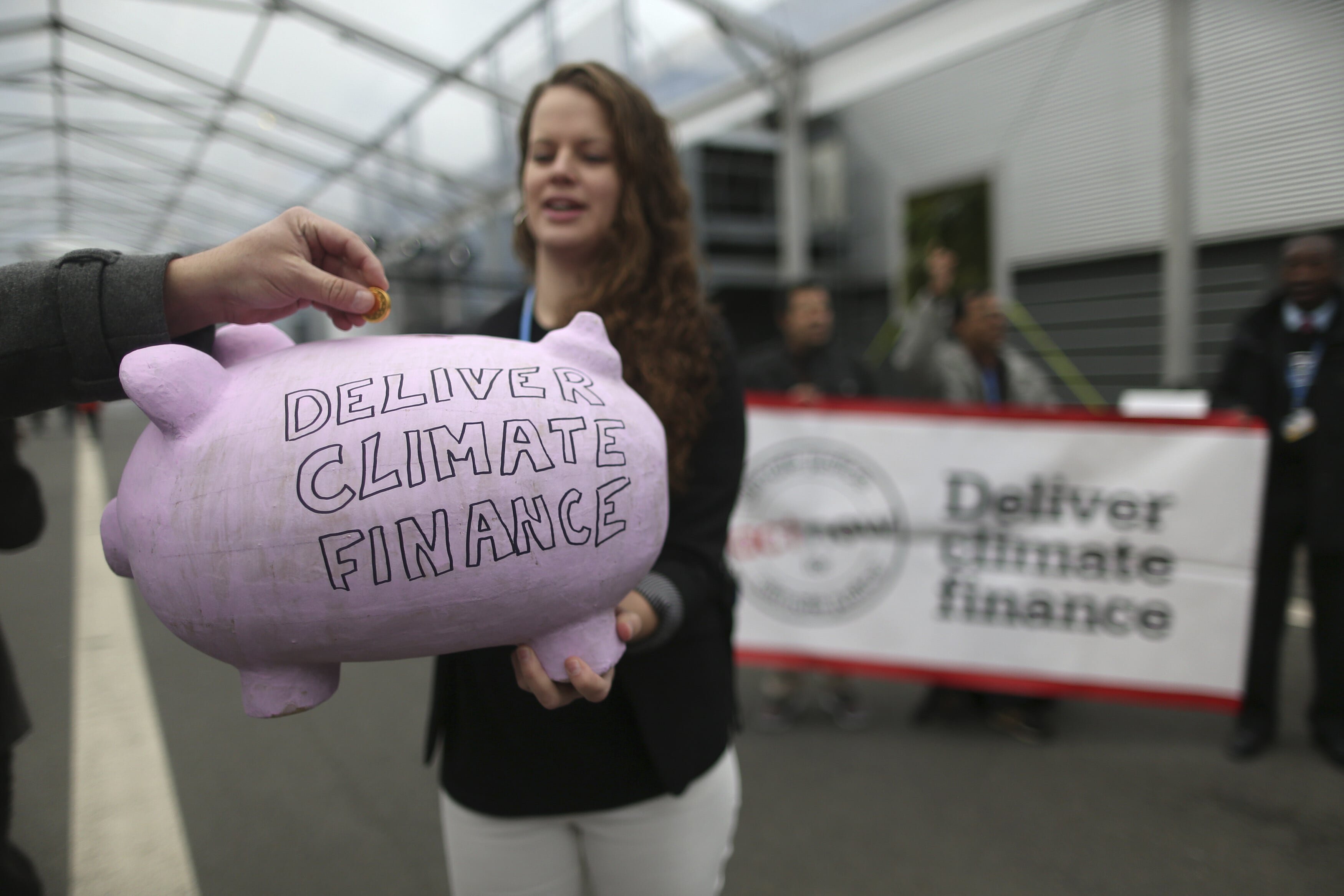What next for the economies of Latin America?

Ilan Goldfajn
Director of the International Monetary Fund, in charge of the Western Hemisphere DepartmentStay up to date:
Latin America
Six years have passed since the last global financial crisis. The worst lies behind us, but normality has not yet been restored. The United States has been able to sustain robust growth rates and create jobs, but wage growth and inflation remain low and doubts about secular stagnation remain. The euro area avoided a breakdown, but the region has struggled to sustain even moderate levels of growth. Japan has renewed its effort to fight deflation, with mixed results so far. Basic interest rates remain at zero in the US. Monetary expansion is still being implemented in Europe and Japan.
China’s recovery from the global financial crisis was fast, on the back of a strong policy stimulus, largely through quasi-fiscal policies. But the stimulus policies created distortions: investment rates, already higher than desired, rose further. Spare capacity in many sectors of the economy mounted. Now China is growing significantly less and the deceleration is structural, as policy-makers attempt to rebalance China’s growth: less investment, more consumption and, perhaps, less damage to the environment. In sum, a lower but more balanced economic growth.
The Fed is gradually removing the monetary stimulus implemented during the crisis. As US interest rates rise, emerging market bonds become less attractive. Liquidity will be more expensive, and Latin American countries will face tighter external financial conditions.
A new global environment appears on the horizon: the US is about to start a monetary-tightening cycle and China growth will keep decelerating. What does it mean to Latin America? In some aspects, this means a more challenging and risky environment for growth ahead.
Fundamentals will differentiate countries
Investment in the region is partially financed by foreign savings. Moderate but widespread current account deficits in the region highlight that. So far, investors searching for yield have been eager to finance emerging economies, but as US bond returns rise, this may no longer be the case. Foreign savings will be less easily available. In order to keep investing, domestic savings will have to rise.
High commodity prices will no longer be a tailwind for investments in Latin American countries. In the past decade, LatAm terms of trade improved as urbanization in China boosted demand for commodities. Stronger terms of trade have helped to boost investment in this low-saving region. As China’s investment boom fades, commodity prices will be lower than in the past. The region will face less benign terms of trade ahead.
Hence, global conditions for investment will be more difficult. In order to keep growing, Latin American countries must rely on productivity gains. Chile, Peru and Colombia stand out due to their good institutional environment, trade openness and reforms. The ongoing reform process and US recovery may raise growth rates in Mexico. Argentina, on the other hand, will need to correct macro and micro policies to achieve higher growth rates and control inflation.
In Brazil, there are challenges ahead. Inflation is hovering around the ceiling of the target range, and nominal fiscal deficits are high. Besides the macroeconomic imbalances, structural problems such as lack of adequate infrastructure and excess red tape remain. Restoring confidence and implementing reforms are necessary for resuming high growth rates.
Riskier environment for Latin America
In principle, monetary policy normalization in developed economies will be smooth. In practice, however, problems may occur. Disruptions are often unpredictable. History tells us that long periods of easy monetary policy are often followed by financial and economic volatility.
Recently, we have seen sharp price reductions in some key commodities, such as oil, iron ore and soy. Are lower and more volatile commodity prices a new trend? It’s still too soon to reach conclusions, but that certainly stands out as a possibility. Supply has reacted, with long lags, to high prices negotiated in recent years, and China is growing slower than in the past.
Regardless of fundamentals or domestic macro policies, there is a common trend, at least, for the commodity exporters of the region: growth deceleration is the norm. This is true in Chile, Peru, Brazil, Argentina, Colombia and Venezuela. Evidently fundamentals matter: Chile, Peru and Colombia are growing faster than the other countries. Argentina is facing a harsh recession and Brazil is again somewhere in the middle. Mexico belongs in a different category because it is not a commodity exporter; it is an exporter of manufactured goods to the US.
The global environment has become riskier. Are LatAm countries prepared for sudden capital outflows? And for lower, and possibly more volatile, commodity prices? The answer to both questions is: more than in the past. Why?
Many countries in the region made the most of the good years to build buffers. External positions have become much more resilient. Public debt has been reduced and its composition is much healthier. Inflation-targeting regimes have been successfully implemented, allowing the use of exchange rates to absorb shocks from abroad. Better macro fundamentals created room to face this challenging external environment with counter-cyclical policies. Chile, Colombia, Mexico and Peru fit into this category.
Short-term debt is now a small fraction of foreign liabilities. Most foreign liabilities are denominated in domestic currency, as direct investment and portfolio equity account for most foreign inflows to Latin American countries. Besides, central banks accumulated international reserves during the boom period, so many governments now have a net long dollar position. Exchange rates have resumed their role of guaranteeing the balance-of-payments equilibrium.
Public debt fell significantly as a proportion of GDP, and its profile has improved: the maturity of debt increased and the share of dollar-denominated debt fell substantially. In some countries, the fiscal policy framework improved. Government started to implement counter-cyclical fiscal rules instead of targeting a specific level of public balance.
Monetary policy has become much more credible in the recent past. Central banks moved from fixed exchange-rate regimes to inflation-targeting regimes. Inflation expectations are anchored in the inflation target, not in the exchange rate itself. Therefore, the pass-through from exchange rates to inflation has been substantially reduced. Those gains in credibility allow the use of counter-cyclical monetary policy.
However, some countries in the region are in a worse position. During the good years, fiscal and monetary policies were extremely expansionary, which, coupled with fixed exchange-rate regimes, led to major internal and external imbalances. Argentina and Venezuela fall into this category.
Author: Ilan Goldfajn, Chief Economist, Itaú Unibanco
Image: People walk in Buenos Aires’ financial district, August 14, 2014. REUTERS/Marcos Brindicci
Don't miss any update on this topic
Create a free account and access your personalized content collection with our latest publications and analyses.
License and Republishing
World Economic Forum articles may be republished in accordance with the Creative Commons Attribution-NonCommercial-NoDerivatives 4.0 International Public License, and in accordance with our Terms of Use.
The views expressed in this article are those of the author alone and not the World Economic Forum.
Related topics:
Forum Stories newsletter
Bringing you weekly curated insights and analysis on the global issues that matter.
More on Financial and Monetary SystemsSee all
Sandra Waliczek and Harry Yeung
July 29, 2025
Pranidhi Sawhney and Adam Skali
July 29, 2025
David Carlin and Sourajit Aiyer
July 28, 2025
Veronica Frisancho
July 22, 2025
Jesus Serrano
July 14, 2025





